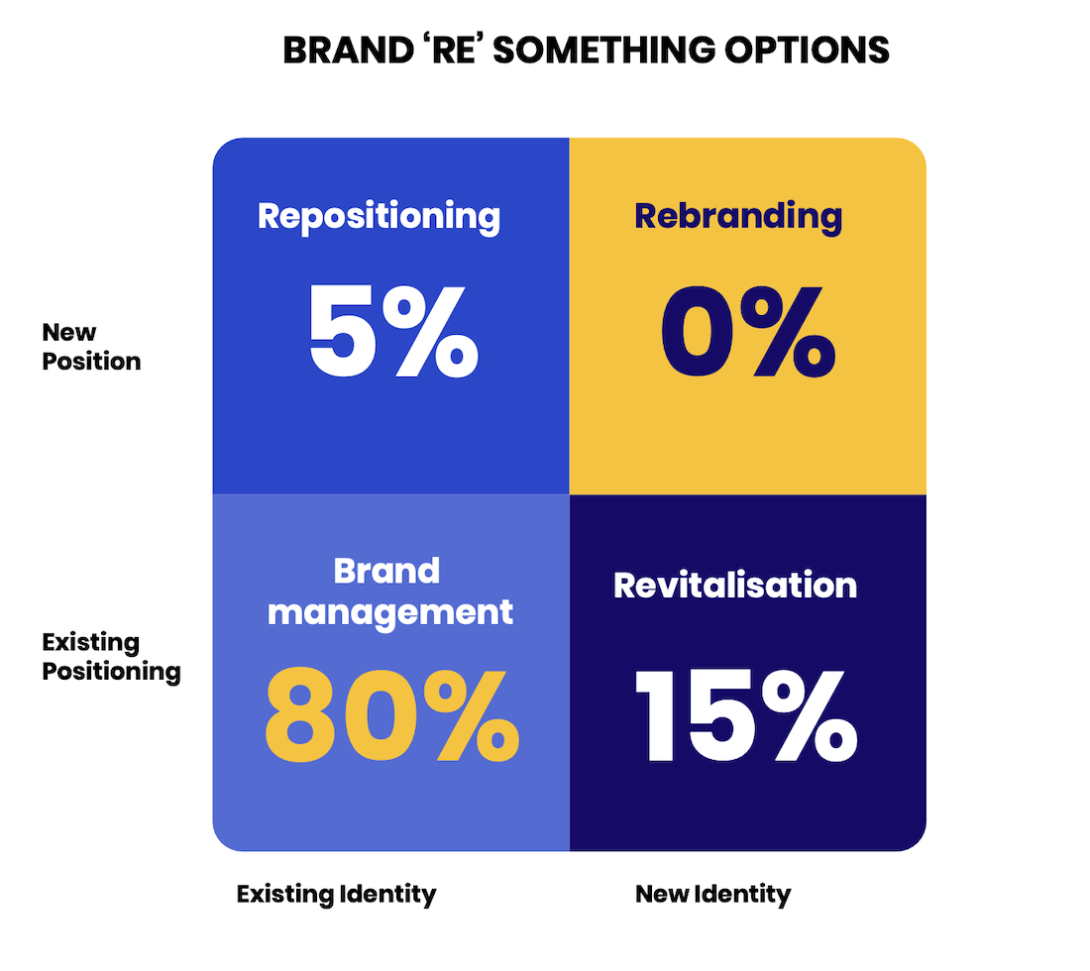Rebranding has become a dangerous, misunderstood, go-to phrase.

Almost every day I read an article about a ‘rebranding’ project, only to discover it’s not a rebrand project after all, and that the driving forces identified, needed a different brand management tool to fix the problem.
I’ve spent over 20 years consulting on SME brands and my experience is that good brand management can resolve 80% of the problems or opportunities identified by an organisation, negating the need for a rebrand or other drastic ‘re-somethings’ fraught with risk.
I appreciate it’s not always rosy in the market, and that conditions arise which need a degree of alternative thinking, but don’t make the mistake of clustering these alternative options under a single ‘rebranding’ nuclear option.
Brand strategy is about choices, and you must therefore gather the evidence to guide your decisions, both internal and external market orientation research. Armed with the right market perspectives and financial insights, you have two options BEFORE you think about a rebrand:
👉 First, consider a brand ‘revitalisation’ option.
Doesn’t change the fundamental position of the brand.
Changes the look or feel to how a brand expresses itself.
Helps a brand address perceived lack of innovation.
Avoids a brand’s reliance on an ageing client base.
Refreshes how the brand articulates its current positioning.
👉 Second, consider a brand ‘repositioning’ option.
8 times out of 10, this will be a mistake, so be very careful.
Fundamentally changes the intended image for the brand in the category.
An option frequently driven by individual bias and ego to make a mark.
Relevant for when commercial failure of existing positioning is measured.
Consider when your differentiation becomes a point of parity with competitors.
👉 Finally, your last resort, a full ‘rebrand’ option.
Avoid this nuclear option at all costs if your brand is well established.
This nuclear choice requires exceptional negative drivers to be in play.
All-encompassing changes to your name, identity, positioning, touch points.
Often alienates loyal customer base and results in loss of brand equity.
Far reaching negative consequences for customers, culture, and company.
From creating a degree of insulation during recession to enhancing recruitment success, reducing price sensitivity to building brand equity, achieving market penetration to providing a springboard for new product launches, well managed brands deliver value far beyond growing sales revenues...and 80% of all brand related problems or opportunities can be fixed here without the need for a rebrand.